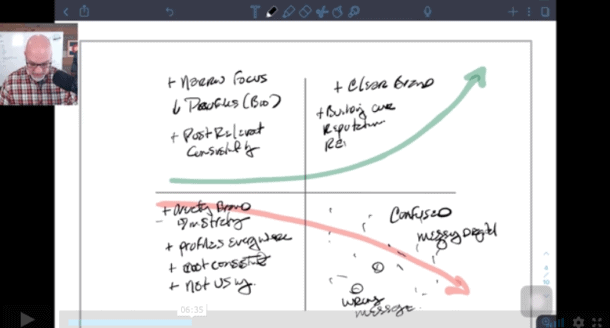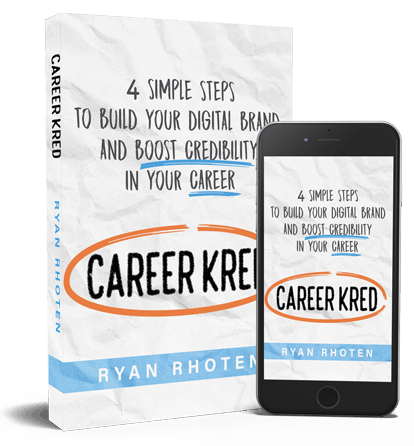Throughout my career, I have heard leaders misuse and confuse these three simple words; vision, strategy, and actions. Some believe that vision and strategy are the same, interchangeable, if you will.
Others think that by simply taking “action” they are being strategic. The reality is that the three words are complimentary and must be executed in conjunction in order to be effective.
Not implementing these three together is a leading cause on why your employees disengage, become complacent and stop leading from the middle. In order to understand my reasoning let’s explore each word individually.
VISION DEFINITION
Dictionary.com defines Vision as
“the act or power of anticipating that which will or may come to be”.
Said another way vision is looking forward and deciding what you want yourself or your business to become in the future.
For those in the corporate world when I say future, I do not mean next quarter or two-quarters from now. Vision is a longer term view of what your business will become 3-5 years from now.
 A well-defined vision will act as the guiding principle for all aspects of your business. A vision is something that you can get people to rally behind and quickly communicate throughout your organization in a consistent manner.
A well-defined vision will act as the guiding principle for all aspects of your business. A vision is something that you can get people to rally behind and quickly communicate throughout your organization in a consistent manner.
When used correctly Vision is something that you can “bounce” immediate or short-term decisions off of before settling on a strategy or course of action. If the decision or course of action you are wanting to take does not move you closer to your vision you need to step back and rethink.
Those of us who manage from the middle, believe it not, like to know where we are heading. We want to be able to tell people who ask the reasons behind why we are implementing this feature over that one or why we are changing a business process that “works just fine today”.
In my consultations with various companies, this is a very common theme from those in the middle. We don’t mind changing directions but we do want and need to know why. Vision gives us the why.
A Vision is an end point but it also the starting point for long-range business planning. There is a reason why Vision is habit number two in Steven Covey’s The 7 Habits of Highly Effective People (affiliate link) which states “start with the end in mind”.
If you don’t know where you want to end up, you will be distracted along the way and could easily be knocked off course. Vision helps you stay connected with where you want to drive your business. How you get there depends on your strategy.
STRATEGY DEFINED
Dictionary.com defines Strategy as
“a plan, meld, or series of maneuvers for obtaining a specific goal or result”.
Therefore, strategy consists of the plans that a company will execute in order to achieve it’s Vision. This is where I see most companies begin to get confused and begin to lose their way. They confuse strategy with Vision.
When a company mixes strategy and vision it becomes easy to execute plans that really drive them nowhere. Let me offer the key differences between the two.
- A change in Vision will impact and necessitate a change in your strategies.
- A change in strategy will not impact or change your Vision.
Strategies require companies to make decisions about what they will and will not do to achieve its vision. In order to move an entire organization forward, multiple strategies with multiple steps may need to be deployed. Each strategy needs to have within it defined achievements aligned with how quickly you want to get there given your current resources. They must also be established based on obtaining the Vision.
Setting your strategies is a critically important step for your company. Two critical keys to “employee engagement” come from this activity; inclusion and goal setting. While you are developing your strategy you must have your employees participate in the process.
If strategies are established without employee input you will end up with employees who begin to disengage, feeling as though their opinion does not matter.
Setting strategies is not a management only activity. If you want your employees in the middle to be engaged they must be included in this activity. They are not robots who want to be told what to do and will often have insights not visible to those above.
Another reason for inclusion is that their annual goals will come from defining the strategies. By including them in the process, you will gain their buy-in and earn their engagement.
ACTIONS
Dictionary.com defines Action as an
“organized activity to accomplish an objective”.
Once a company defines the strategies (plans) necessary to achieve its Vision it can now begin to develop the organized activities required to execute those plans. These organized activities become the individual goals and objectives for your employees.
I have visited many companies who struggle the most with this issue. They believe that “doing things” means that are being strategic. So I ask, how are these activities (actions) that you are executing moving you closer to your Vision?
Or, can you show me the strategy that these actions align with? I usually get a blank stare.
Doing things for the sake of doing things will not move your business forward long-term. They may actually cause more problems than benefits. Actions should always be undertaken to align with your strategies, which of course are aligned with your Vision. If they are not your employees will know and eventually your customers will know as well.
Hopefully, this has helped you understand why establishing a Vision is critical to driving your business. Without a guiding vision, you risk having strategies that are not aligned and possibly even conflicting. Avoid this by establishing a Vision and constantly referring back to it when decisions need to be made.
When implemented correctly you will see your business start moving forward and the culture in your company will begin to change for the better.
I close with a quote from King Solomon, “Where there is no vision, the people parish”. From a business standpoint, “where there is no vision, your employee’s spirit will perish”.
If you don’t have a Vision, establish one soon. Determine the strategies necessary to achieve your vision and the actions required to meet your strategic goals. You will be surprised at the clarity this brings for your company and most importantly your employees, who will thank you for it.





